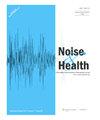由于多孔衬里,轮胎气腔模式的频率降低和衰减
IF 1.3
4区 医学
Q3 AUDIOLOGY & SPEECH-LANGUAGE PATHOLOGY
引用次数: 0
摘要
众所周知,轮胎空腔模式是200赫兹附近车辆结构传播的道路噪声的重要来源。在轮胎的内表面放置多孔衬里是衰减这种共振的有效对策。这种衬里的两个显著效果是声压衰减和空腔模态的频率降低。本文采用解析和数值相结合的方法,对多孔衬砌的影响机理进行了研究。建立了二维管道型解析模型和轮胎型数值模型,并结合Johnson-Champoux-Allard模型描述了多孔材料的粘惯性耗散效应。对多孔衬砌的设计参数进行了控制,研究了它们对多孔衬砌的影响,并提出了设计参数的最佳范围。最后,在实验分析中,对力、加速度和声压的测量结果进行了声衰减和频率下降的观察。结果表明,所建立的解析模型和数值模型能够较好地预测多孔衬里的影响,而频率的降低是由于衬里的存在降低了轮胎内的声速。本文章由计算机程序翻译,如有差异,请以英文原文为准。
Frequency reduction and attenuation of the tire air cavity mode due to a porous lining
The tire air cavity mode is known to be a significant source of vehicle structure-borne road noise near 200 Hz. A porous lining placed on the inner surface of a tire is an effective countermeasure to attenuate that resonance. The two noticeable effects of such a lining are the sound
pressure attenuation and the frequency reduction of the air cavity mode. In this paper, through both analytical and numerical methods, the mechanism of the effects of porous lining was studied. A two-dimensional duct-shaped analytical model and a tire-shaped numerical model were built to investigate
the lined tire in conjunction with the Johnson-Champoux-Allard model describing the visco-inertial dissipative effects of the porous material. Design parameters of the porous lining were controlled to study their impact and optimal ranges of the design parameters were suggested. Finally, in
experimental analysis, the sound attenuation and the frequency drop were observed in measurements of force, acceleration, and sound pressure. In conclusion, it was demonstrated that the suggested analytical and numerical models successfully predict the effect of porous lining and that the
frequency reduction results from the decreased sound speed within the tire owing to the presence of the liner.
求助全文
通过发布文献求助,成功后即可免费获取论文全文。
去求助
来源期刊

Noise & Health
AUDIOLOGY & SPEECH-LANGUAGE PATHOLOGY-PUBLIC, ENVIRONMENTAL & OCCUPATIONAL HEALTH
CiteScore
2.10
自引率
14.30%
发文量
27
审稿时长
6-12 weeks
期刊介绍:
Noise and Health is the only International Journal devoted to research on all aspects of noise and its effects on human health. An inter-disciplinary journal for all professions concerned with auditory and non-auditory effects of occupational, environmental, and leisure noise. It aims to provide a forum for presentation of novel research material on a broad range of topics associated with noise pollution, its control and its detrimental effects on hearing and health. It will cover issues from basic experimental science through clinical evaluation and management, technical aspects of noise reduction systems and solutions to environmental issues relating to social and public health policy.
 求助内容:
求助内容: 应助结果提醒方式:
应助结果提醒方式:


